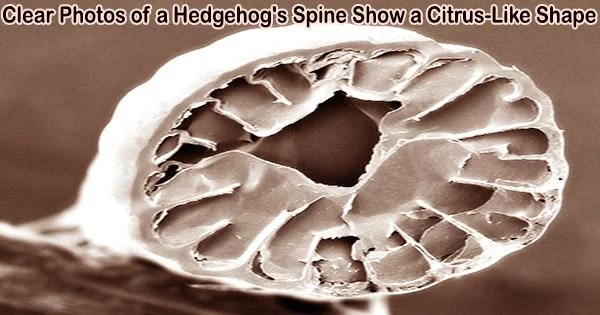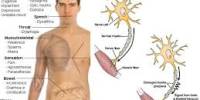A hedgehog’s spine is one of its most distinctive features. Unlike the fur-covered bodies of many other animals, hedgehogs have sharp, stiff spines that cover their backs and sides. These spines are known as quills or prickles.
Hedgehog spines’ internal structure has been observed in detail microscale photographs to resemble the interior of a citrus fruit, which may help to explain their flexibility and strength.
To celebrate Hedgehog Awareness Week run by the British Hedgehog Preservation Society from 30th April to 6th May, 2023, a team at the University of Nottingham’s Nanoscale and Microscale Research Centre (nmRC) have investigated hedgehog spines using a range of materials characterization techniques including X-Ray Photoelectron Spectroscopy (XPS) and Scanning Electron Microscopy (SEM).
Microscale images were created of the interior and exterior of the spines. Imaging of the spine’s cross section revealed support segments and hollow regions, similar to what is seen when a citrus fruit is sliced in half. This was one of the most unexpected findings. The photos also demonstrated the exterior’s scaly microstructure and ribbed surface pattern.
In order to show the public the inside of a hedgehog spine, which is likely something they have never seen before, nmRC worked with the nearby nonprofit Hedgepigs on this initiative to increase public awareness of hedgehogs.
Dr. Hannah Constantin, XPS technician at the nmRC is a huge fan of hedgehogs and signed the University of Nottingham up to become a Hedgehog Friendly Campus, she imaged the spines alongside electron microscope technician Lorelei Robertson.
It’s great that the nmRC is helping to raise awareness about hedgehogs and I was keen to be involved. Getting people talking about hedgehogs is a great starting point to help our spiky friends. We have used XPS and SEM to study the elemental composition and structure of hedgehog spines. This is important because it will give conservationists vital information to continue their amazing work.
Dr. Hannah Constantin
Hannah says, “I have very fond memories of watching hedgehogs in my parents’ garden when I was a child, they were frequent visitors. As an adult, I started seeing them less and less, and after doing some research, I found out that hedgehog numbers in the UK have declined by 50% since the year 2000. Resolved to do something about it, I discovered the Hedgehog Friendly Campus initiative, and signed the University of Nottingham up. Slowly the group grew, and we now have silver Hedgehog Friendly Campus status and are currently working towards gold.”
“It’s great that the nmRC is helping to raise awareness about hedgehogs and I was keen to be involved. Getting people talking about hedgehogs is a great starting point to help our spiky friends. We have used XPS and SEM to study the elemental composition and structure of hedgehog spines. This is important because it will give conservationists vital information to continue their amazing work.”
Although the project didn’t analyze the reasons behind the internal structure of the spines, Hedgehog enthusiast Hannah suggests:
“I would say that the fins allow for a good strength-to weight ratio of the spine. A hollow spine would be light, but easy to bend or crush. A completely solid spine would be strong but heavy. The fins resist bending and crushing, but don’t add a lot of weight, and their radial arrangement probably strengthens them in (almost) all directions.”
Deborah Korn from the neighborhood hedgehog rescue organization Hedgepigs kindly provided the hedgehog spines. A brief e-booklet and two posters were created as educational tools after the results were compiled.
It’s important to note that hedgehog spines should be handled with care, as they can prick or cause discomfort if mishandled. Hedgehogs are capable of rolling into a protective ball, exposing their spines when they feel threatened.
Deborah Korn, founder of hedgehog rescue charity Hedgepigs commented: “Hedgehog Awareness Week is massively important to highlight the plight of one of our nation’s favorite wildlife species. Hedgehogs have been around since the days of the saber tooth tiger. But they are now under immense pressure as a species.”
“They are currently on the UK’s Red List, which means they are vulnerable to the point of extinction. We humans are their main problem in their fight to survive, but we can also be the reason that they succeed and keep going for millennia to come. It is vital that we do everything we can to understand them if we are able to help their species survive. This Hedgehog Awareness Week, we are incredibly proud to have been able to help the University of Nottingham take a look at hedgehog spines in a new way using incredible imaging techniques.”
















